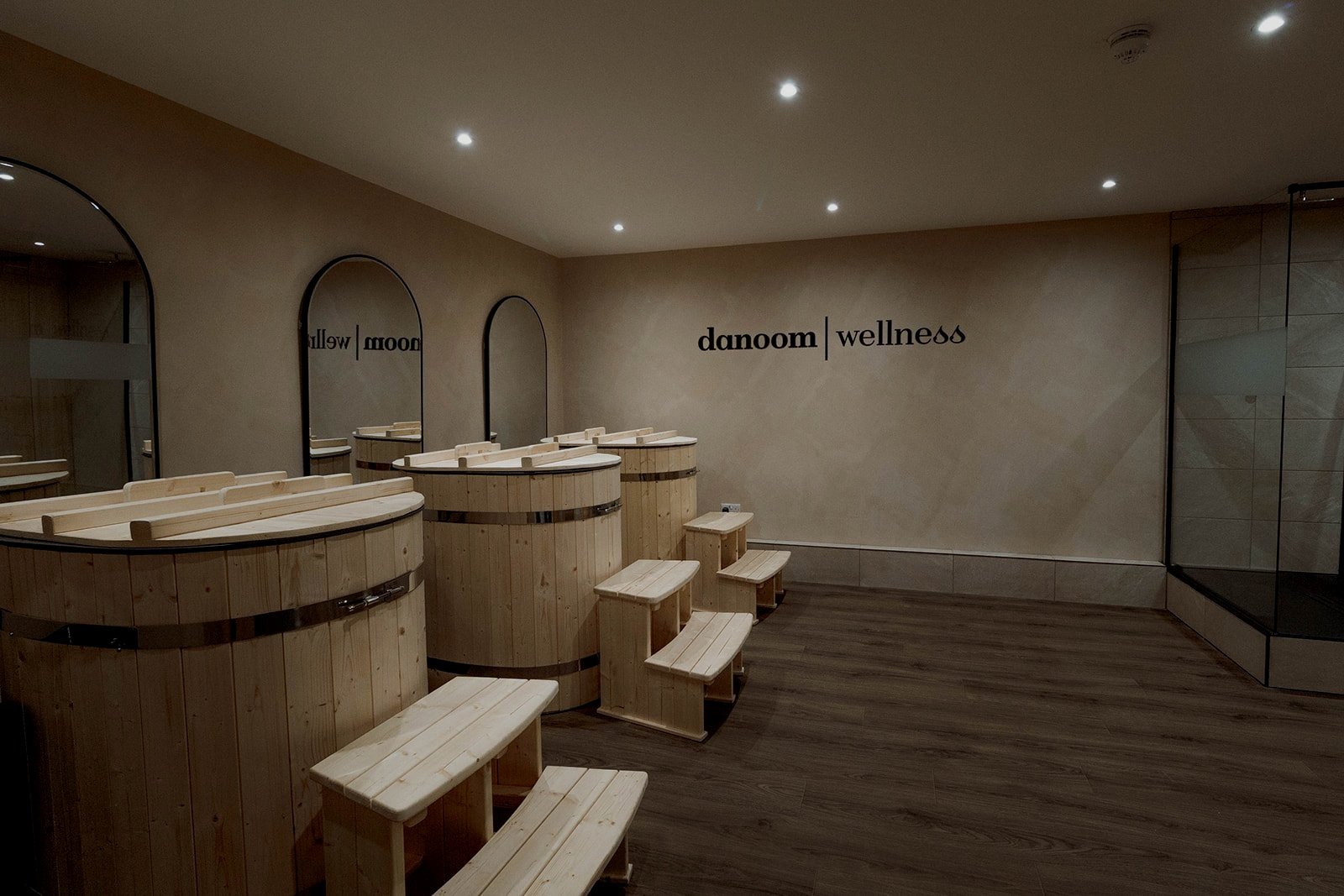
Contrast Therapy in Aberdare, South Wales
Discover the transformative power of Contrast Therapy at Danoom Wellness. A brand new wellness destination equipped with a sauna and three ice baths at 6°C, 4°C and 2°C.




The Transformative Power of Contrast Therapy
-
Alternating between hot and cold environments boosts circulation. Here's how it works:
In a sauna, your blood vessels undergo a process called vasodilation, expanding to allow blood to flow more freely. This increased flow delivers more oxygen and nutrients to your muscles and tissues. Conversely, when you immerse yourself in an ice bath, your blood vessels constrict in vasoconstriction. This constriction redirects the blood from your extremities to your vital organs, maintaining their warmth.
This alternation creates a pumping effect, where blood is flushed in and out of your muscles and tissues. This helps to remove metabolic waste products, reduce inflammation, and improve overall circulation. Studies have shown that good circulation can promote faster recovery, better performance, and enhanced overall health.
So, by regularly practising contrast therapy, you're stimulating your body and promoting healthier, more efficient blood circulation.
-
Contrast therapy can accelerate recovery following training. This is primarily due to its impact on blood circulation, but there's more to it.
During heat exposure, your blood vessels undergo vasodilation, bringing nutrient-rich, oxygenated blood back to the muscles. These nutrients aid in repairing any micro-damage to the muscle tissue, accelerating the healing process and reducing the time needed for recovery.
Then, during the cold exposure phase, your blood vessels undergo vasoconstriction, pushing the blood from your extremities towards your core. This process helps to quickly remove metabolic waste products, like lactic acid, that accumulate in the muscles during exercise and lead to soreness and fatigue.
Additionally, the cold phase helps to reduce inflammation and swelling, which are common after intense exercise. By managing inflammation, contrast therapy helps alleviate pain and further speed up recovery.
-
Contrast Therapy effectively combats muscle soreness. Particularly the type that appears a day or two after an intense workout, known as Delayed Onset Muscle Soreness (DOMS).
The fundamental principle behind this is the alternating vasodilation and vasoconstriction of blood vessels.
The warm phase of contrast therapy induces vasodilation. This increases blood flow, delivering a fresh supply of oxygen and nutrients to the muscles. This process can aid in faster repair and recovery of the muscle tissues, mitigating the severity and duration of DOMS.
During the cold phase, the body undergoes vasoconstriction, reducing inflammation and numbing the nerves - thereby alleviating the sensation of pain.
Moreover, the pumping effect aids in flushing out lactic acid and other metabolic waste products from muscles, which are associated with muscle soreness.
-
Contrast therapy's influence on the immune system is intriguing and multi-faceted. One key mechanism is its impact on circulation. As discussed earlier, the alternating hot and cold exposure causes a pumping effect, which aids in promoting lymphatic drainage.
The lymphatic system plays a crucial role in our immune function. It transports lymph, a fluid containing white blood cells that combat infections, throughout the body. The pumping action encouraged by contrast therapy can enhance the flow of lymph, thus improving immune surveillance and response.
Studies also show that exposure to the cold can stimulate the production of white blood cells, including lymphocytes, monocytes, and granulocytes. This makes the body's natural defence system stronger. This is likely due to the body’s increased metabolic rate as it works to warm up, leading to an enhanced immune response.
In the hot phase of contrast therapy, the elevated body temperature is akin to a mild fever, the body's natural defence mechanism against infections. This can stimulate the immune system and promote the release of heat shock proteins, which are known to have protective effects on our cells.
So, regular contrast therapy sessions can be a tool for boosting your immune function, enhancing your body's ability to fend off illnesses.
-
Contrast therapy is becoming increasingly recognised for its positive effects on mood and mental health. This stems from a combination of physiological and psychological factors.
On the physiological side, exposure to cold has been found to increase the production of mood-boosting chemicals in the brain. For instance, cold exposure stimulates the release of endorphins, often referred to as the body's 'feel-good' hormones. These natural mood lifters help to induce feelings of euphoria and happiness, similar to the 'runner's high' experienced after a good workout.
Simultaneously, cold exposure can also increase the production of neurotransmitters that affect attention, focus and mood regulation.
On the psychological side, regularly participating in contrast therapy can foster a sense of resilience, mental toughness and self-confidence. It's an exercise in embracing discomfort for the sake of wellness, and successfully doing so can leave you feeling strong and accomplished.
Additionally, the sense of relaxation and rejuvenation after a contrast therapy session can significantly reduce stress levels, providing a mood-boosting effect.
While further research is needed in this area, the existing evidence suggests that contrast therapy holds promising potential as a natural and accessible tool for enhancing mood and overall mental well-being.
Introducing Compression Boots
Enhance the benefits of your Contrast Therapy sessions by introducing our state-of-the-art compression boots to your wellness routine.
The gold standard of lymphatic drainage, compression leg therapy will remove waste products, improve your flexibility, and decrease your recovery time, allowing you to train harder.


